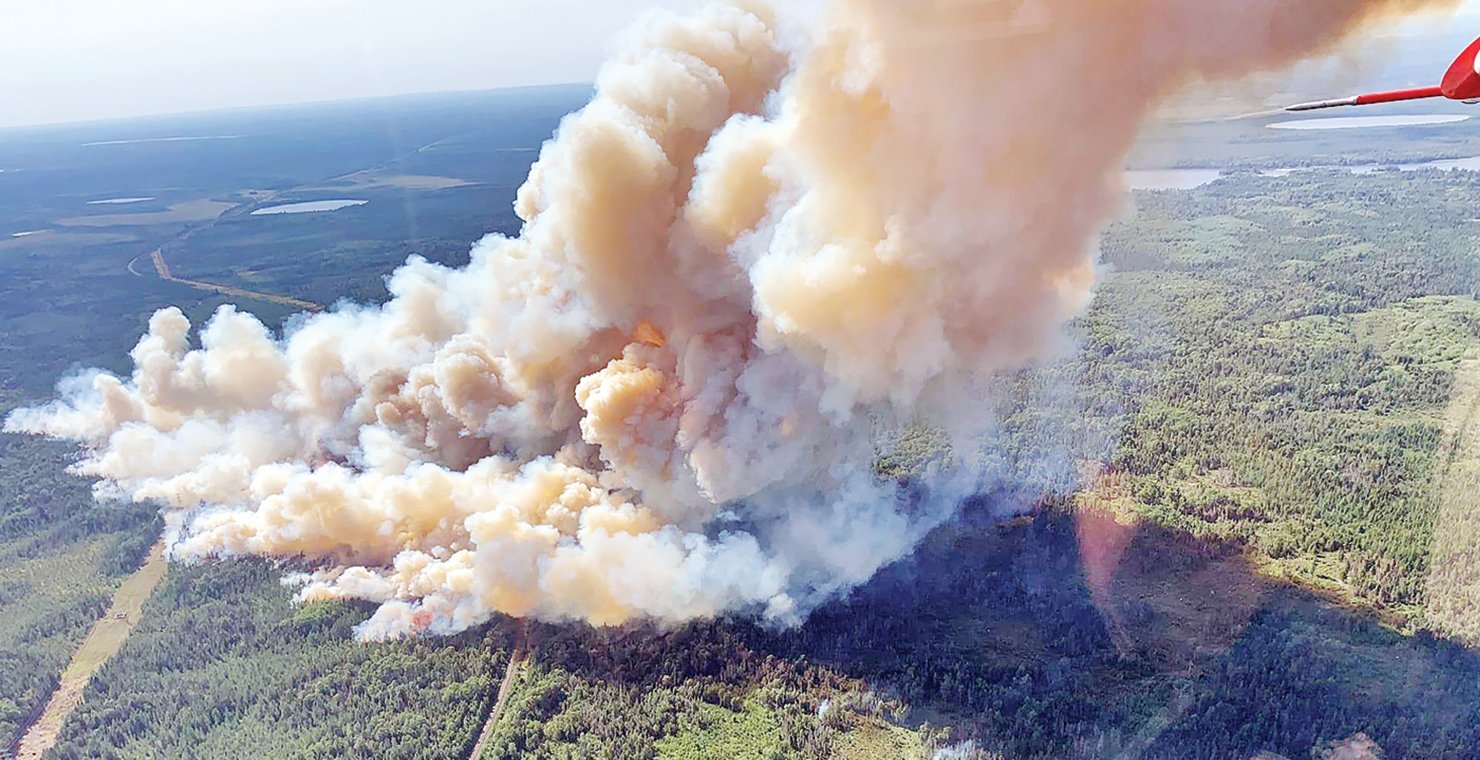Support the Timberjay by making a donation.
Entire BWCAW closed as fire threat grows
Permits canceled through Aug. 27; will reassess weekly
REGIONAL— For the first time in nearly half a century, the U.S. Forest Service has decided to close the entire Boundary Waters Canoe Area Wilderness due to a rash of wildfires that have exploded across the national forest in recent days. The closure, which took effect midday on Saturday, is in effect at least until Friday, Aug. 27. Kawishiwi District Ranger Aaron Kania said the Forest Service will assess conditions weekly and hope that sufficient rain will arrive to allow them to reopen the 1.1-million-acre wilderness as soon as possible.
“This is definitely not a decision we took lightly,” said Kania. “We know the impact this will have on businesses in our gateway communities. This really shows how extreme this drought has become and how extreme the fire conditions have gotten.”
Months of intensifying drought have created fire conditions far beyond what is normally seen in northeastern Minnesota, even during the fall fire season, and the conditions have stretched resources well beyond the capacity of the Forest Service to manage fires and the BWCAW simultaneously.
The Forest Service had already closed much of the northwestern part of the Boundary Waters several weeks ago in response to several major wildfires just north of the border, in Quetico Provincial Park. Those fires have grown dramatically in recent days, as well, fueled by the same conditions that are posing challenges south of the border.
While the Forest Service had managed to keep most of its wildfires under control for much of the summer, the recent intensification of the drought and a full week of near critical fire weather allowed both the Greenwood and John Ek fires to explode as of Friday. The Greenwood fire, a lightning strike fire first reported Aug. 15, nearly doubled in size to over 9,000 acres on Friday, crossing Lake County Hwy. 2 and threatening structures in the vicinity. Meanwhile, within the Boundary Waters itself, the John Ek fire, an inaccessible blaze many miles into the wilderness that had been smoldering for a week, blew up on Friday, growing to an estimated 1,600 acres.
Several other smaller fires continue to demand the attention of the Forest Service and the Forest Service had maintained a number of closures in recent weeks in response, both inside and outside of the wilderness. “As we looked at it all together, it really made sense to go wilderness-wide with the closure,” said Kania, who said the decision will allow the Forest Service to focus its fire-fighting resources on the highest priority fires.
The closure means no new permits are being issued until further notice and all permits issued for Aug. 21-27 have been canceled. Anyone with permits starting Aug. 28 or beyond is supposed to receive an email alerting them of the situation. Those travelers already in the wilderness are being contacted as best as possible by wilderness rangers, who are advising them of the closure and the need for them to evacuate in an orderly way as soon as practical.
Kania said the Forest Service will be considering allowing some day use of the wilderness in the coming days, but for now, he said, officials are focused on the fire situation. “Once we catch up with the fire activity yesterday, may be able to catch up for some day use, like motor use,” said Kania.
The decision to close the Boundary Waters is not unprecedented. The Forest Service closed the entire Superior National Forest due to drought back in 1976.
This is a developing story and the Timberjay will have more information as it becomes available.






